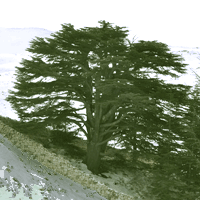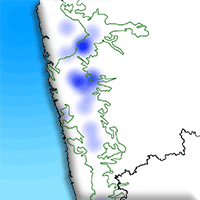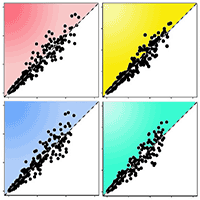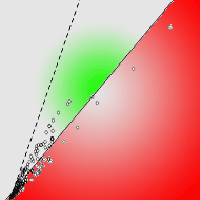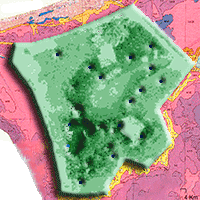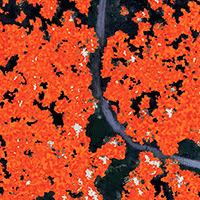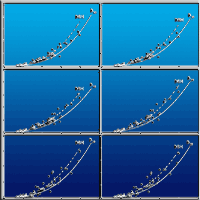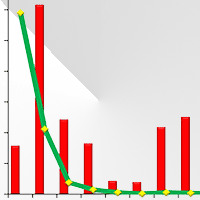
Tree biomass and carbon density estimation in the tropical dry forest of Southern Western Ghats, India
Babu Padmakumar (1) , Naduparambu P Sreekanth (2), Viswanathan Shanthiprabha (2), Joby Paul (1), Kasau Sreedharan (1), Toms Augustine (1), Kazhuthuttil K Jayasooryan (1), Mutharimettak Rameshan (1), Mahesh Mohan (1), Eswara V Ramasamy (1), Ambattu P Thomas (2)
iForest - Biogeosciences and Forestry, Volume 11, Issue 4, Pages 534-541 (2018)
doi: https://doi.org/10.3832/ifor2190-011
Published: Aug 01, 2018 - Copyright © 2018 SISEF
Research Articles
Abstract
United Nations Framework Convention on Climate Change highlights the significance of carbon storage and emission in forests towards climate change mitigation. The aim of this study was to quantify the tree biomass and carbon density (carbon storage) in the tropical dry forest of the Chinnar Wildlife Sanctuary of Kerala located in the Southern Western Ghats, India. We investigated the species-wise contribution of carbon (C) storage, as well as the species-wise and plot-wise correlation between carbon and other dendrometric variables. We also analysed the girth (diameter) wise distribution of carbon and tree density in the study region. The study was conducted in eight selected sample plots of the region, each with an area of 0.1 hectare. Species-specific volume and specific gravity relationship coupled with suitable regression equation were used to estimate biomass. Tree carbon was assumed to be 47% of the biomass. The results showed that the average biomass and carbon density of the vegetation were 64.13 t ha-1 and 30.46 t-C ha-1, respectively. Among the 32 species identified, Tamarindus indica L. (17%), Hardwickia binata Roxb. (14%), Terminalia arjuna (Roxb. ex DC.) Wight & Arn (10%) and Pleiospermium alatum (Wight & Arn.) Swingle (10%) were dominant as for carbon storage. The correlation analysis showed that basal area is a good predictor of tree biomass and carbon, while the role of tree density and tree diversity remain uncertain in determining carbon storage. With respect to diametric class distribution, tree density showed a reverse J-shaped pattern indicating the sustainable regeneration of the analysed forest, where the small- (diameter at breast height 3-9 cm) to medium-sized trees (diameter at breast height 10-69 cm) were found to contribute to more than 50% of biomass and carbon in the forest. The study provides useful information for carbon mitigation strategies in a tropical dry forest in the Southern Western Ghats.
Keywords
Above Ground Tree Biomass, Carbon, Tropical Dry Forest, Kerala, Southern Western Ghats
Authors’ Info
Authors’ address
Joby Paul
Kasau Sreedharan
Toms Augustine
Kazhuthuttil K Jayasooryan
Mutharimettak Rameshan
Mahesh Mohan
Eswara V Ramasamy
School of Environmental Sciences, Mahatma Gandhi University, Kottayam 686 560 (India)
Viswanathan Shanthiprabha
Ambattu P Thomas
Advanced Centre of Environmental Studies and Sustainable Development (ACESSD), Mahatma Gandhi University, Kottayam 686 560 (India)
Corresponding author
Paper Info
Citation
Padmakumar B, Sreekanth NP, Shanthiprabha V, Paul J, Sreedharan K, Augustine T, Jayasooryan KK, Rameshan M, Mohan M, Ramasamy EV, Thomas AP (2018). Tree biomass and carbon density estimation in the tropical dry forest of Southern Western Ghats, India. iForest 11: 534-541. - doi: 10.3832/ifor2190-011
Academic Editor
Tamir Klein
Paper history
Received: Aug 04, 2016
Accepted: Jun 05, 2018
First online: Aug 01, 2018
Publication Date: Aug 31, 2018
Publication Time: 1.90 months
Copyright Information
© SISEF - The Italian Society of Silviculture and Forest Ecology 2018
Open Access
This article is distributed under the terms of the Creative Commons Attribution-Non Commercial 4.0 International (https://creativecommons.org/licenses/by-nc/4.0/), which permits unrestricted use, distribution, and reproduction in any medium, provided you give appropriate credit to the original author(s) and the source, provide a link to the Creative Commons license, and indicate if changes were made.
Web Metrics
Breakdown by View Type
Article Usage
Total Article Views: 54253
(from publication date up to now)
Breakdown by View Type
HTML Page Views: 43005
Abstract Page Views: 4719
PDF Downloads: 5434
Citation/Reference Downloads: 14
XML Downloads: 1081
Web Metrics
Days since publication: 2699
Overall contacts: 54253
Avg. contacts per week: 140.71
Citation Metrics
Article Citations
Article citations are based on data periodically collected from the Clarivate Web of Science web site
(last update: Mar 2025)
Total number of cites (since 2018): 18
Average cites per year: 2.25
Publication Metrics
by Dimensions ©
Articles citing this article
List of the papers citing this article based on CrossRef Cited-by.
References
Aboveground biomass and carbon stocks of tree species in tropical forests of Cachar District, Assam, Northeast India. International Journal of Ecology and Environmental Sciences 39 (2): 97-106.
Gscholar
Evaluating plant diversity in different forest types of Kerala by laying out permanent sample plots. KFRl Research Report no. 156, Peechi, India, pp. 86.
Gscholar
Assessment of phytomass carbon pools in forest ecosystems in India. NNRMS Bulletin, Indian Institute of Remote Sensing, Dehradun, India, pp. 41-47.
Gscholar
Volume equations for forests of India, Nepal and Bhutan. Forest Survey of India, Ministry of Environment and Forests. Govt. Of India, Dehradun, India, pp. 249.
Gscholar
Indian woods: their identification, properties and uses. Indian Council of Forestry Research and Education (ICFRE), Dehradun, India, vol. I-VI, pp. 1431.
Gscholar
Guidelines for national greenhouse gas inventories. Vol. 4: Agriculture, forestry and other land use (AFLOLU). Intergovernmental Panel on Climate Change (IPCC), Institute for Global Environmental Strategies, Hayama, Japan, pp. 1-83.
Gscholar
Rainfall and elevation influence the local-scale distribution of tree community in the southern region of Western Ghats biodiversity hotspot (India). International Journal of Forestry Research 2012 (4387): 1-10.
CrossRef | Gscholar
Weather data acquisition from selected Wildlife Sanctuaries in Kerala. KFRI Research Report no. 176, Peechi, India, pp. 200.
Gscholar
Management plan for Chinnar Wildlife Sanctuary 2012-2013 to 2021-2022. Kerala Forest Department (KFD), Department of Forest and Wildlife, Government of Kerala, India, pp. 202.
Gscholar
India’s forest and tree cover: contribution as a carbon sink. Technical Paper no. 130 ICFRE BL-23, Indian Council of Forestry Research and Education, Dehradun, India, pp. 12.
Gscholar
A safer bet for REDD+: review of the evidence on the relationship between biodiversity and the resilience of forest carbon stocks. Working Paper v2, Multiple Benefits Series 10, UN-REDD Programme, UNEP World Conservation Monitoring Centre, Cambridge, UK, pp. 35.
Gscholar
The status and distribution of freshwater biodiversity in the Western Ghats, India. IUCN and Zoo Outreach Organisation, Cambridge, UK and Gland, Switzerland, pp. 1-116.
Gscholar
Introduction. In: “Dry Tropical Forests” (Mooney HA, Bullock SH, Medina E eds). Cambridge University Press, Cambridge, UK, pp. 1-8.
Gscholar
Carbon stock assessment in the vegetation of the Chitteri Reserve Forest of the Eastern Ghats in India based on non-destructive method using tree inventory data. Journal of Earth Science and Climatic Change S11- 001: 1-9.
Gscholar
Effects of forest conversion on vegetation and soil carbon and functional trait of resulting vegetation. In: “Impact of Global Climate Changes on Photosynthesis and Plant Productivity” (Abrol YP, Wattal PN, Gnanum A, Govindji Ort DR, Teramura AH eds). Oxford and IBH Publishing Company, New Delhi, India, pp. 723-749.
Gscholar
Carbon inventory methods handbook for greenhouse gas inventory, carbon mitigation and round wood production projects. Springer, Netherlands, vol. 29, pp. 306.
Gscholar
Benchmark map of forest carbon stocks in tropical regions across three continents. Proceedings of the National Academy of Sciences USA 108 (24): 9899-9904.
CrossRef | Gscholar
Studies on the flora of Chinnar Wildlife Sanctuary. Research report no. 167, Kerala Forest Research Institute, Peechi, India, pp. 365.
Gscholar
Manual on spatial assessment of vegetation carbon pool of India. Indian Institute of Remote Sensing, ISRO, Department of Space, Govt. of India, Dehradun, India, pp. 32.
Gscholar


